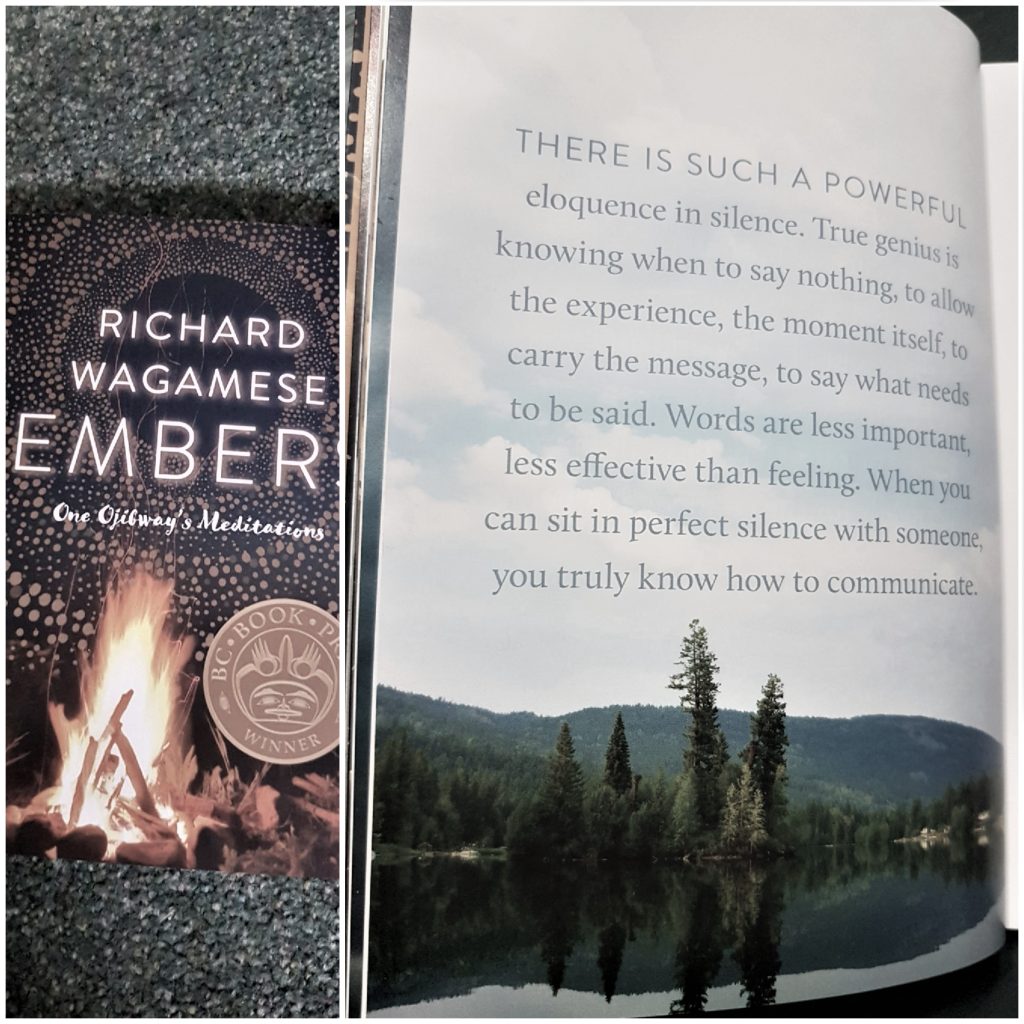I have selected six books, related to my facilitation work, to read this summer. My challenge is to actually read them and learn from them; since, during the summer, I like reading light, fun and frivolous books. That’s a good thing, yet, I know I will appreciate and be inspired or provoked, by these six books. Therefore, to keep me focussed, to help me read the books, and to learn from them, I plan to write short blogs about paragraphs and sentences in the books, as I read them, that are significant to me, and to how I facilitate.
Silence … from Embers by Richard Wagamese (book 1 on my list)
There is such a powerful eloquence in silence. True genius is knowing when to say nothing, to allow the experience, the moment itself, to carry the message, to say what needs to be said. Words are less important, less effective than feeling. When you can sit in perfect silence with someone, you truly know how to communicate.
I love this paragraph! As a facilitator, one of the most important lessons I learned was to ask, “Whose silence is it?” A facilitator may feel uncomfortable when someone in a group doesn’t answer a question or offer an opinion. The facilitator doesn’t need to “make the silence” hers; rather, be objective and neutral and remain silent herself while the group participants feel and think about the topic, and decide when and how to answer. Yes, it’s hard and sometimes awkward to stay in silence; yet it can to be the experience, the moment itself, to carry the message, to say what needs to be said.
Ways a facilitator and a group can use silence effectively:
A facilitator may acknowledge the silence and offer a time to remain silent. Say to participants: I notice everyone is silent. I invite all of us to be as comfortable as we can with this silence. In three minutes, I will invite everyone, who wishes, to share what they feel and think about the topic.”
Use foundational discussion methods to help observe, analyze, assess, and act when a group is silent. I use the Mutual Learning Cycle explained in The Skilled Facilitator by Roger Schwarz http://www.schwarzassociates.com/ and the ORID Conversation of Technology of ParticipationTM, https://www.slideshare.net/StephenBerkeley/the-focused-conversation-method-orid-63521262as outlined below:
- Start by observing what is happening, either to myself or expressed to the group (I do not hear anyone talking; I see people sitting with eyes closed, etc.).
- Then, I and the group express feelings (What are you feeling? How made you comfortable in this time of silence? What made you uncomfortable?, etc.).
- The next step is to make meaning of the silence (What does the silence make you think about? What do you think is going on to make us all silent?, etc.).
- The final step is decide what to do (How could we use this silence in our discussions? What can we do to use the silence? What can we do to move out of the silence about this topic?, etc.)
Intentionally build silence into a facilitated session. Design individual and silent reflection time for each topic. Ask participants to write down their feelings, thoughts, and ideas; encourage them to walk around silently; play soothing music.
Use an object to request silence. The Circle Way discussion approach http://www.thecircleway.net/employs a tingsha or bell or other sound making object to invoke silence. Any participant can ring the bell and ask for a minute of silence to reflect.
Another quote from Embers:
Spirituality isn’t found in big, important-sounding words or long speeches. It’s found in silence.
